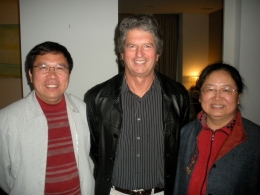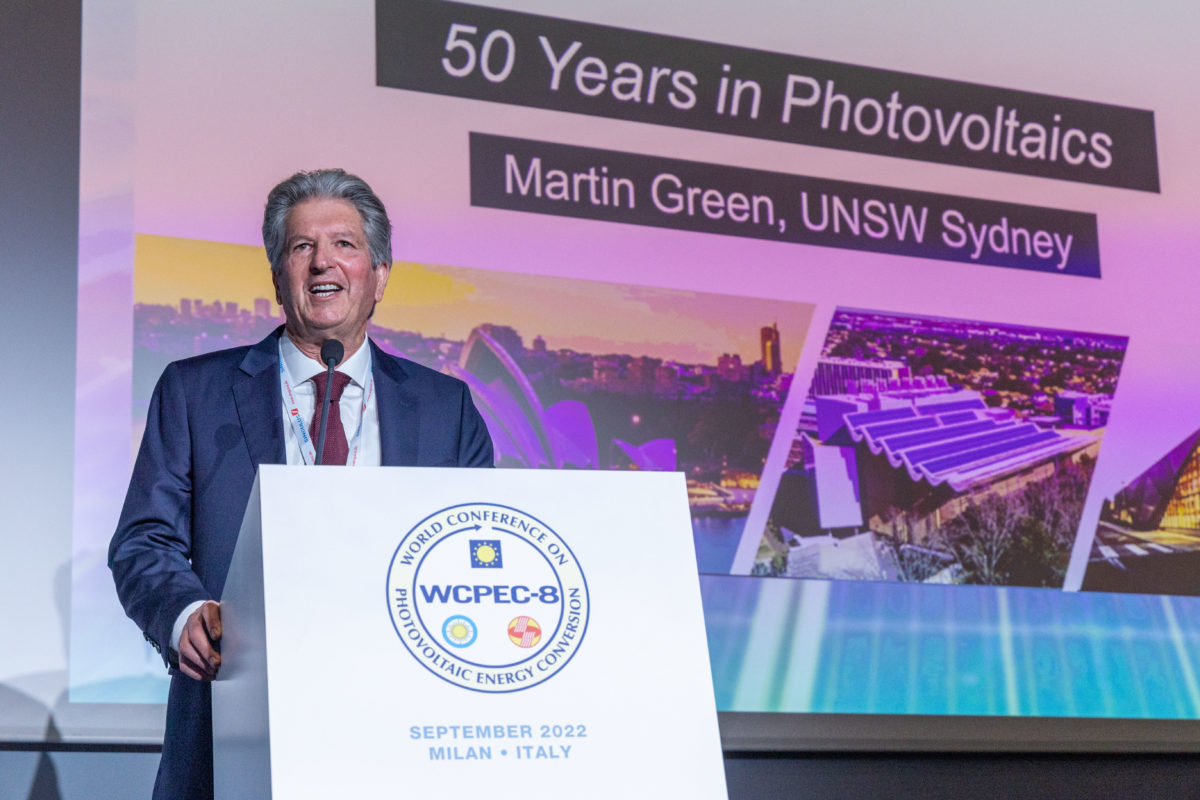The esteemed engineering accolade is presented to engineers responsible for ground-breaking innovations that have been of global benefit to humanity, with judges deeming Passivated Emitter and Rear Cell (PEERC) technology as underpinning solar’s success story, ultimately enabling low cost, decarbonised energy the world over.
In 1983, Martin Green and Andrew Blakers at the University of New South Wales produced solar cells with 18% efficiency, surpassing the 16.5% recorded previously. Over the next few years, they published cell results of 19% and 20% efficiency, and theoretically determined the maximum achievable efficiency to be close to 30%.
Green’s Lab at the University of South Wales held the global record for efficiency for 30 of the 40 years from 1983 to 2023, with Aihua Wang and Jianhua Zhao leading the work which eventually reached Green’s 25% efficiency target.

Image: UNSW Sydney
Recognising the important role PERC technology plays in the development of solar energy, the awardees published their findings with no patent, encouraging further developments within the field and driving down the cost of production to the benefit of wider society.
Through continued research and development, and the help of many others worldwide, the Queen Elizabeth Prize judges said the 2023 laureates significantly reduced the costs of solar panels, which has fallen by over 80% in the past decade. PERC technology, which introduced an additional layer on the back surface of solar cells to help prevent recombination and reflected unused photons back into the silicon to generate more electrons, is now the most commercially viable and efficient solar cell technology. It accounts for almost 90% of the global solar cell market.
The 2023 laureates will be formally honoured at the Queen Elizabeth Prize presentation ceremony and will receive GBP 500,000 ($865,000 / USD 602,000).
The International Energy Agency has forecasted global solar capacity to almost triple over the 2022-2027 period to become the largest source of power capacity in the world. Currently, solar represents about half of new-build electricity generation capacity worldwide.
This content is protected by copyright and may not be reused. If you want to cooperate with us and would like to reuse some of our content, please contact: editors@pv-magazine.com.









By submitting this form you agree to pv magazine using your data for the purposes of publishing your comment.
Your personal data will only be disclosed or otherwise transmitted to third parties for the purposes of spam filtering or if this is necessary for technical maintenance of the website. Any other transfer to third parties will not take place unless this is justified on the basis of applicable data protection regulations or if pv magazine is legally obliged to do so.
You may revoke this consent at any time with effect for the future, in which case your personal data will be deleted immediately. Otherwise, your data will be deleted if pv magazine has processed your request or the purpose of data storage is fulfilled.
Further information on data privacy can be found in our Data Protection Policy.